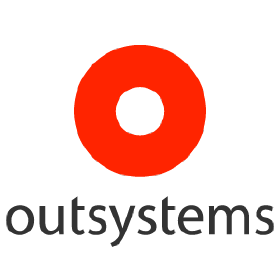
Perspectives on the days, months and years ahead in the new technology fabric driving people, organisations and society at large. Written by Patrick Jean, CTO, OutSystems and Miguel Lopes, VP Platform Strategy at OutSystems.
Technology changes all the time. That’s part of the core dynamism that drives so many of us to embrace its ability to innovate around, through and between many of the challenges of modern life.
As we look forward to the major change factors that will impact information technology in the days, weeks and months ahead, we can see the quantum-level forces enabling us to leap, create and make – and occasionally break – legacy outdated systems and methodologies with new, modern, platform-based approaches.
Platform-first products
If there is an over-arching trend describing the way many of the most progressive moves are happening in IT today, it is the platform-based approach to applications and data. Moving enterprise IT to a higher-level reckoning and embracing modern development platforms is the only assured route to unlocking the innovation that we will need in the years ahead.
By embracing modern development platforms with all the automation, intelligence and proven constructs they can provide, we can circumvent the global challenge we face in terms of scarce developer talent. In a world where enterprise software engineering productivity is now a direct measure of business agility, enterprises need to wake up to the realisation that we can now remove the more tedious aspects of software development in day-to-day operations.
Whether you call it grunt work, donkey work or plain old drudgery, there are the quantum breaks we can make to sever our reliance on the way things used to be done. The resulting quantum leap will enable our developer teams to focus on creativity and innovation. It’s a fundamental shift to bringing business value and business outcomes closer to the heart of any organisation’s core lifeblood and structure.
The undifferentiated difference
We can now make advances by looking to modern application and data service platforms that can shoulder, manage and execute the modern undifferentiated (but still critical) tasks associated with systems operation. This will enable us to take a leap forward to cloud-native technologies where services and connections are constantly updated for competitive advantage.
This is the point at which organisations can work with the latest elements of the cloud universe to automatically scale and manage their IT stacks in the most productive way possible.
This involves the use of containers and Kubernetes to provide development teams with the most progressive structures for application architectures that are capable of rapid change when business requirements switch inside a week, or, even overnight.
Always present in any conversation at this level is security. Providing developers and the user groups they serve with a more straightforward but eminently trusted security experience is key. We know that most developers are not security experts in their own right, so providing modern application platform services that enable software teams to rapidly build effective systems that are free of vulnerability risk is of paramount importance.
With ransomware very much on the rise this decade, there is heightened pressure on the developer function inside any business to build and secure robust systems that will protect commercial operations for the short, medium and long term.
The popularisation and proliferation of DevSecOps practices will further drive our need to embrace modern application platforms, structures and toolsets that systematically manage all stages of app development and delivery for each new app. This will differ fundamentally from the non-systematic ways of the past where different teams with different security maturity can clash together to form what ultimately results in more brittle systems.
Diversity, Equity and Inclusion
Diversity, Equity and Inclusion (DEI) should also incorporate a core sense of belonging as well. The need to ensure that all stakeholders inside any organisation operating in any business vertical feel a sense of belonging and inclusion is a central part of why open systems of meritocracy (rather than archaic notions of hierarchy) work well for all parties, whatever their skill sets.
We can say with some certainty that the rest of this decade will be defined by the progress that corporates (and smaller firms too) make in embracing and enabling DEI and all forms of wellbeing.
We can use modern technology platforms to engender a more wide-ranging notion of DEI. By providing simpler to adopt and use software programming functionalities, we can enable a broader range of candidates with different levels of education and abilities to be recruited into the business.
As we all understand how and why diversity matters so much, modern technology platforms can enable us to welcome people with non-traditional technology backgrounds into IT teams. These new working groups can benefit broadly from team members who do not necessarily have a degree in computer science or a PhD etc.
True diversity opens previously closed channels of innovation (and avoids the spectre of balkanised disconnected development silos) so that we can now look to solve the world’s most complex problems, we can look forward to problem solving at a new level of dexterity.
A quantum leap beyond infrastructure exhaustion
As we finally look forwards then, we can say that this is new age for IT overall. We are past the first era of mega monolithic cloud vendors that we endured a quarter century ago. In more recent times we have grown and developed as an industry, but still suffered from the distractions caused by the huge number of web services on offer from any single IaaS provider. This reality has not enabled regular business developers to create cloud-native applications.
To move forwards productively and effectively and to overcome the challenges of the past, it will become critical to adopt cloud-native development platforms and browser-based IDEs. These technologies allow teams to remain focused on the value stream management for their digital products instead of wasting and exhausting their engineering talent on infrastructure management. We can do better on a human level and on a digital level and we must now dovetail both efforts and make that quantum leap forward.
(Photo by Marcus Urbenz on Unsplash)

Looking to revamp your digital transformation strategy? Learn more about Digital Transformation Week taking place on 11-12 May 2022 and discover key strategies for making your digital efforts a success.
Explore other upcoming enterprise technology events and webinars powered by TechForge here.







